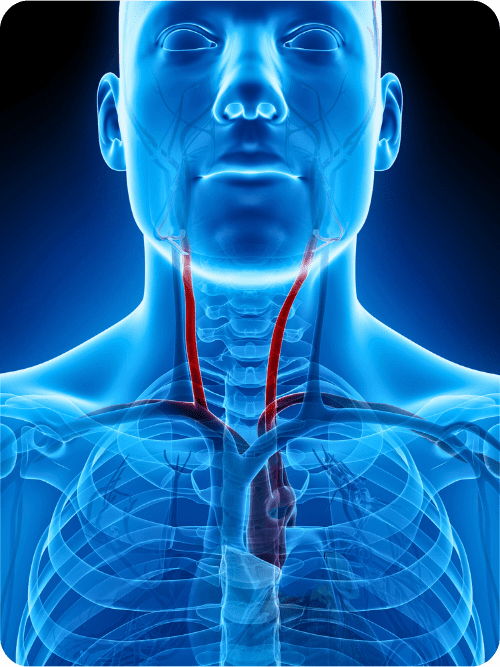 Carotid artery disease occurs when fatty deposits (plaques) clog the blood vessels that deliver blood to your brain and head (carotid arteries). The blockage increases your risk of stroke, a medical emergency that occurs when the blood supply to the brain is interrupted or seriously reduced. Carotid artery disease develops slowly. The first sign that you have the condition may be a stroke or transient ischemic attack (TIA) which is a temporary shortage of blood flow to your brain.
Carotid artery disease occurs when fatty deposits (plaques) clog the blood vessels that deliver blood to your brain and head (carotid arteries). The blockage increases your risk of stroke, a medical emergency that occurs when the blood supply to the brain is interrupted or seriously reduced. Carotid artery disease develops slowly. The first sign that you have the condition may be a stroke or transient ischemic attack (TIA) which is a temporary shortage of blood flow to your brain.
Your doctor is likely to start with a thorough medical history and physical examination. The exam generally includes listening for a swooshing sound over the carotid artery in your neck, a sound that is characteristic of a narrowed artery.
After that, your doctor may recommend:
- Ultrasound to assess blood flow and pressure in the carotid arteries
- Computerized Tomography angiography: Non-invasive x-ray with contrast dye is have a better view of the neck vessels vessels.
- Magnetic resonance angiography (MRA): medical imaging that produces more detailed images of blood vessels
Treatment:
Treatment is aimed to prevent or treat strokes. These procedures are aimed to open the clogged arteries in order to restore blood flow to the brain.
Carotid endarterectomy
The most common treatment for severe carotid artery disease. After making an incision along the front of your neck, the surgeon opens the affected carotid artery and removes the plaques. The artery is repaired with either stitches or a graft.
Carotid angioplasty and stenting
This procedure requires local anesthesia to the insertion site of the catheter, and a catheter threads a tiny balloon to the clogged area. The balloon is inflated to widen the artery. A small wire mesh coil (stent) is inserted to keep the artery from narrowing again. This stent will help keep the artery open and reduces the chances of it narrowing again. Carotid angioplasty and stenting can be an alternative treatment for carotid stenosis when a carotid endarterectomy is not possible or is too risky.